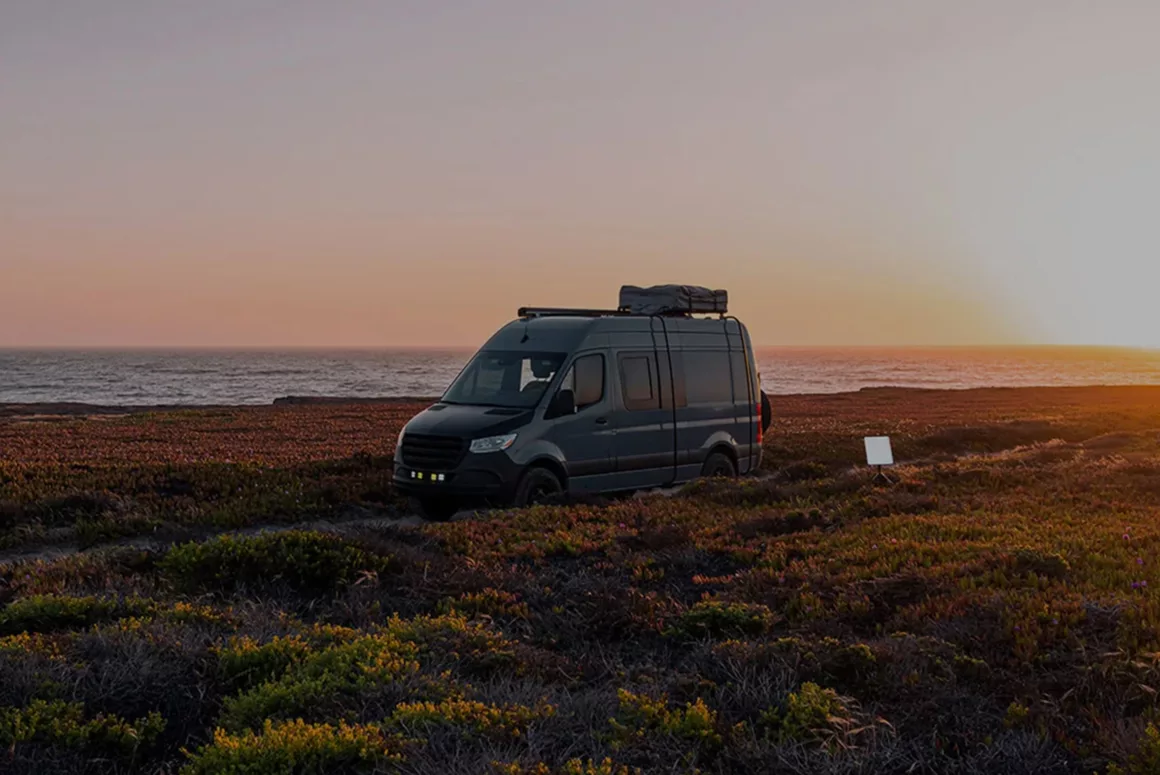If you’re someone who loves the idea of traveling and living off-grid, you know that while this lifestyle can be freeing, it also comes with its own set of challenges, particularly when it comes to finding a reliable way to stay connected. That’s where Starlink comes in.
Using Starlink for the last 9 months has been a game-changer for our ability to work and live comfortably on the road. Before we started using Starlink, we struggled to find reliable internet connections while traveling and had to rely on personal hotspots, spotty public Wi-Fi, or cell boosters. Although cell boosters work well in areas with a slight signal, they’re useless in areas with no signal. Starlink has provided us with consistently fast speeds and enabled us to stay connected and productive in far remote areas where cell service is spotty or non-existent.
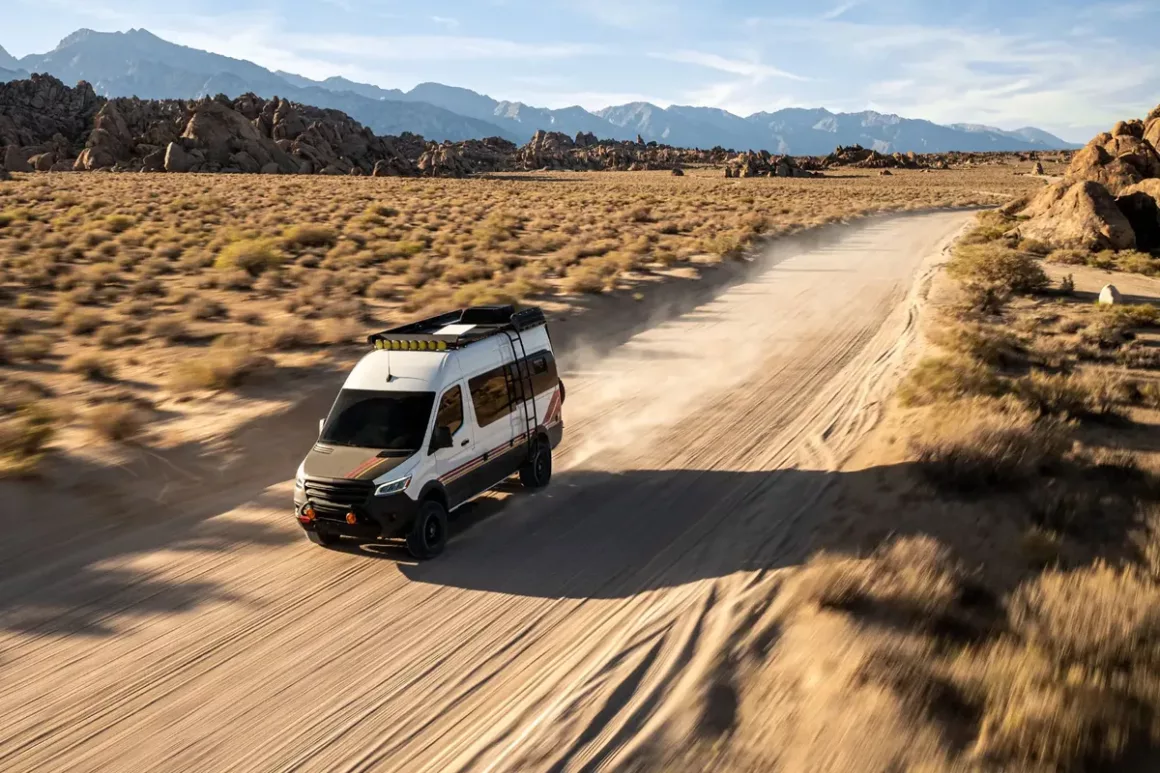
The setup process was easy and straightforward, and we’ve been consistently impressed with the speed and reliability of the service. Starlink has enabled us to travel to remote areas with the peace of mind that we can remain connected to work and family, and has allowed us to truly experience the freedom and flexibility of vanlife without sacrificing the ability to stay connected.
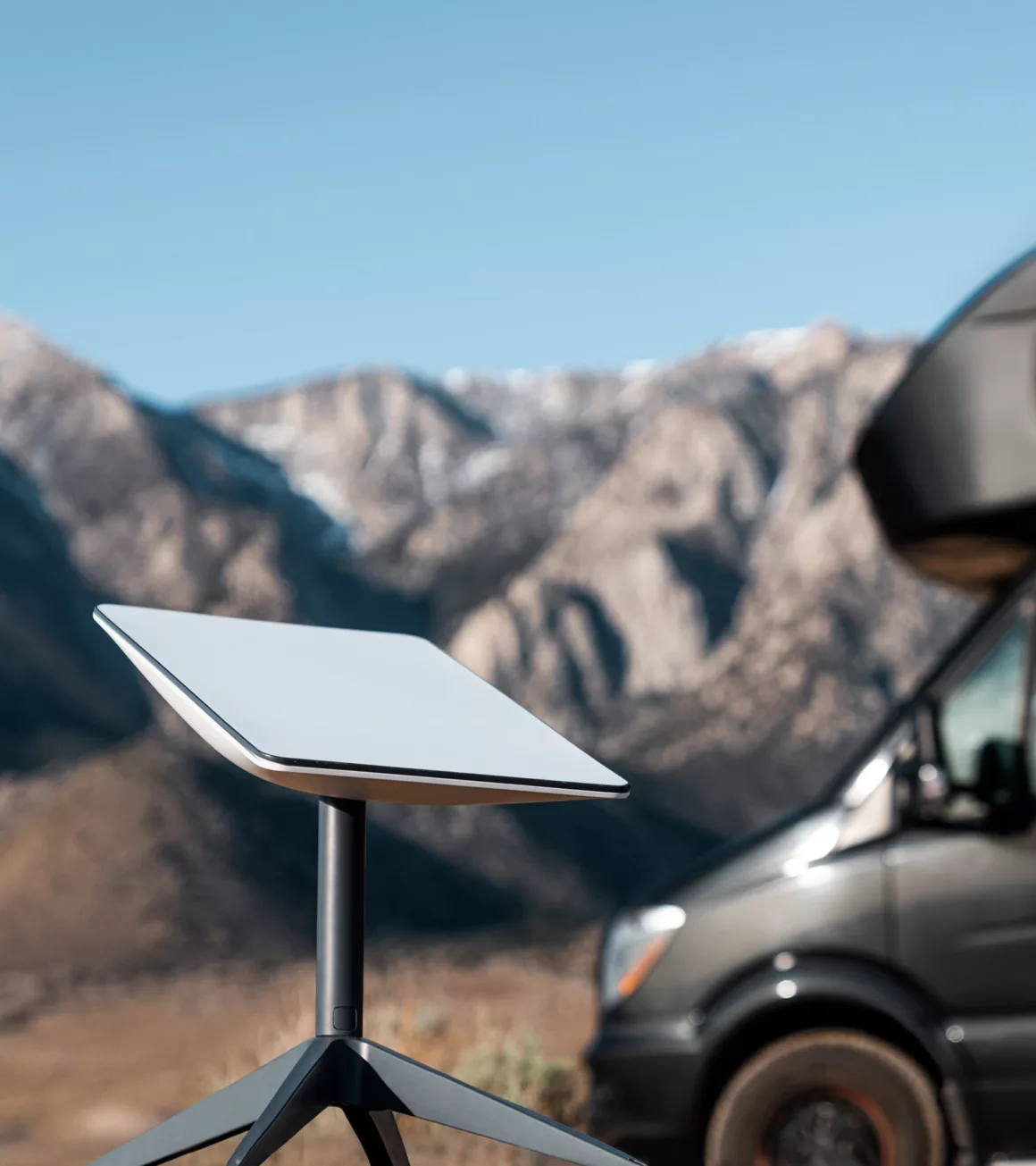
What is Starlink?
Starlink is a satellite internet service provided by SpaceX, the aerospace company founded by Elon Musk. Unlike traditional internet services that rely on physical cables and infrastructure, Starlink uses a constellation of satellites in low-earth orbit to provide internet access to users around the world.
What is Starlink used for?
Starlink’s primary goal is to provide high-speed internet access to areas that are traditionally underserved by traditional internet service providers. This includes rural areas, where running physical cables can be cost-prohibitive. Starlink is also an excellent option for people who live and work on the road, such as digital nomads.
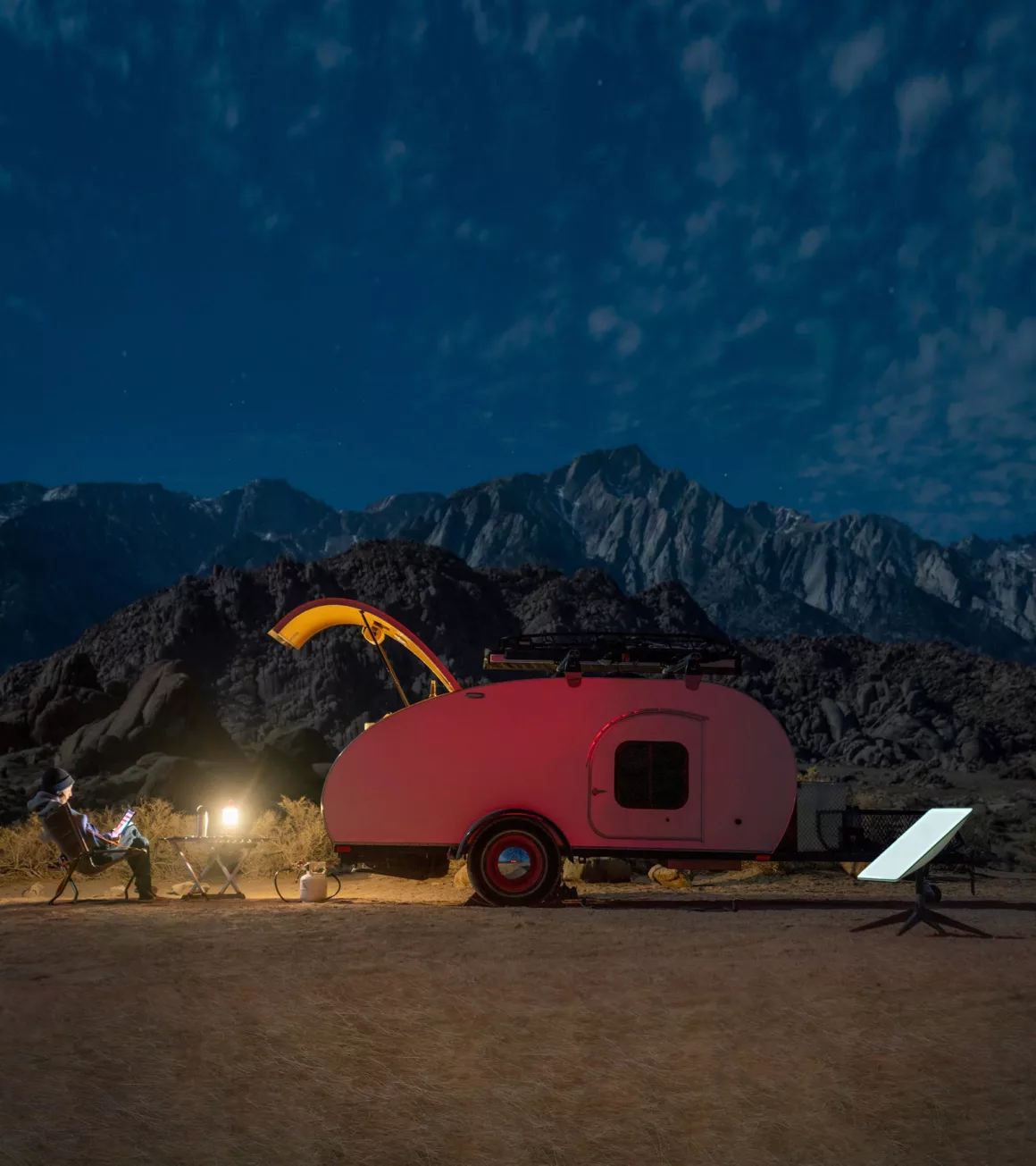
Starlink’s internet speeds are comparable to, if not faster than some traditional internet providers, making it a viable option for streaming, video calls, and other bandwidth-heavy activities. And because Starlink’s satellite network is in low-earth orbit, it has lower latency than traditional satellite internet, which makes it more suitable for real-time applications like video calls and gaming.
Check out this YouTube video by @TTTHEFINEPRINTTT, who demonstrates using Starlink for gaming while on the road:
How is Starlink a game changer?
If you’re a digital nomad, staying connected is essential to your livelihood. Without a reliable internet connection, it can be challenging to stay on top of work and communicate with clients. Traditional internet options like cellular hotspots can be unreliable, particularly in remote areas. With Starlink, you can get high-speed internet access anywhere with a clear view of the sky, even in remote areas.
The Starlink dish or “dishy” is relatively small and lightweight, making it easy to set up and take down, and it can be powered by an AC inverter in your van. This means you can take your internet connection with you wherever you go.
For safe and convenient storage and transportation of the Starlink dish, mobile base, and WiFi router, we highly recommend the Starlink Travel Case. This case is available for purchase on Starlink’s online store for $250.
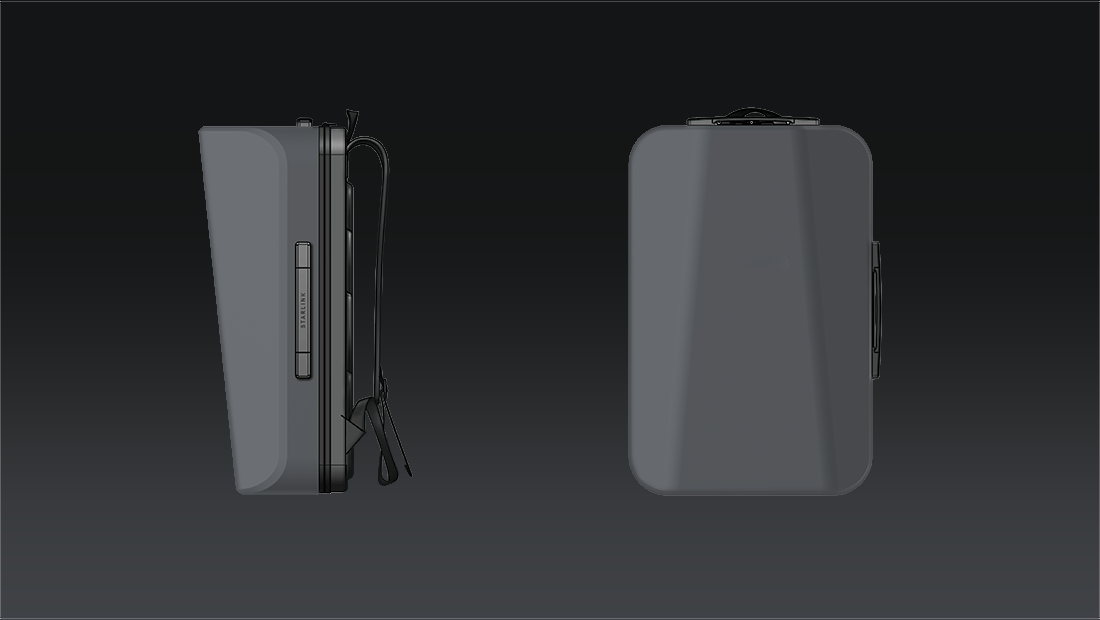
Pros
- High-speed internet access: Starlink provides high-speed internet access that is comparable to, if not faster than some traditional internet providers.
- Portability: Starlink is relatively small, lightweight, and easy to set up, making it perfect for Vanlife & digital nomads who are always on the move.
- Reliability: Starlink’s satellite network is designed to provide internet access to remote locations as long as you’re in an active coverage area with a clear view of the sky.
- Low latency: Starlink’s satellite network is in low-earth orbit, which means it has lower latency than traditional satellite internet, making it more suitable for real-time applications like video calls and gaming.
- No contracts: Pause and resume service when needed, you’ll be billed on a monthly basis.
Cons
- Cost: While Starlink’s pricing is comparable at $135/mo to traditional internet providers, the upfront cost of the equipment can be prohibitive for some digital nomads. At $599 for the standard Starlink and $2,500 for the flat high performance version.
- AC power supply: While most vehicles use 12V DC power, the Starlink’s power supply runs on 110V AC, which means an inverter is needed and results in some energy loss during the conversion from DC to AC power.
- Network Traffic: It’s important to note that network resources for Starlink for RV may be deprioritized compared to other Starlink services, which can result in slower speeds and degraded service in congested areas and during peak hours. This could potentially result in throttled speeds. However, in our experience, we have not had major issues with this, as the areas where we needed Starlink most typically have not been heavily congested.
- Clear view of the sky required: To use Starlink, you need a clear view of the sky, which can be challenging in some areas with dense tree cover or tall buildings.
Coverage


Starlink has recently expanded its high-speed internet coverage to high latitude areas, with further expansion that covers additional parts of the European and North American Arctic in early 2023. The launch of additional 46 Starlink satellites into polar orbit provides coverage for the entire western Arctic, except for Greenland, offering an opportunity to alleviate years of low-speed, high latency internet connection with limited data caps for rural communities, especially across Alaska and Canada.
As long as you’re in an area with active coverage and a relatively clear view of the sky, you should be able to connect to Starlink with a relatively stable and fast connection. Our testing has shown that some obstructions are tolerable, but they may result in lower speeds and more frequent dropouts. However, even in these scenarios, you’ll still have some kind of connection when you’re in a pinch. You can use the Starlink app to test for obstructions.


Speed
We’ve been fortunate to consistently experience decent speeds while on the road, traveling through the Western United States from California to Montana. However, there have been instances where tree coverage significantly impacted connectivity and resulted in slower speeds and more dropouts. Despite this, having a connection has been preferable to having no connection at all. There have been some instances where setting up the dish required more effort than simply turning on a cell booster for a decent connection, but overall, our experience has been positive as long as there is a clear view of the sky. On average, we see download speeds of around 120 Mbps and upload speeds of around 8 Mbps.
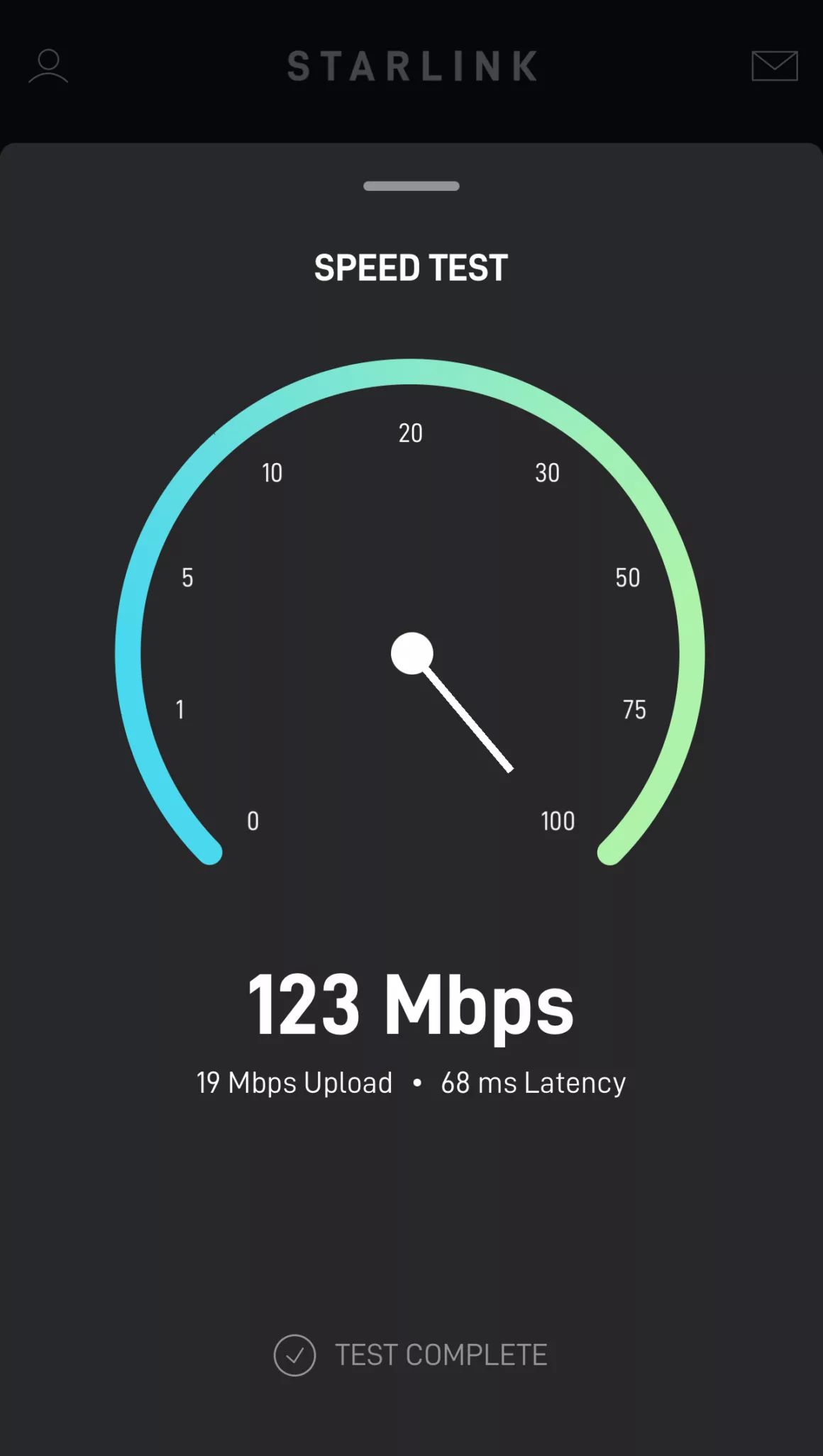
Power Consumption
The Starlink power specs below include the Starlink Dish, WiFi router, and AC power supply.
Standard power specifications:
- Average: 50-75W (5A-7A DC)
- Idle: 20W (< 1A DC)
- Peak: 100-240V~ 2.0A 50-60Hz
High Performance and Flat High Performance power specifications:
- Average: 110-150W (10A-14A DC)
- Idle: 45W (4A DC)
- Peak: 100-240V~ 4.5A 50-60Hz
The power usage of the Starlink system can be affected by factors such as temperature, location, and usage, as well as the enabled features such as the snow-melt.
There are ways to minimize energy loss resulting from the conversion of DC to AC power, such as using a PoE injector to power the dish with a 12V to 48V DC boost power supply. While we won’t delve into these workarounds in this review, they offer a potential solution for reducing energy loss.
Mounting
When spending several days in a single location, we typically mount the Starlink dish on the roof of our van with the Starlink “Short Wall Mount” and a securely fastened 8020 aluminum extrusion. The process of attaching and releasing the dish is easy, thanks to the quick release button. For those who want a more permanent setup or need to use Starlink while in motion, the Starlink Flat High Performance version is an option, but there are caveats that we’ll touch upon below.
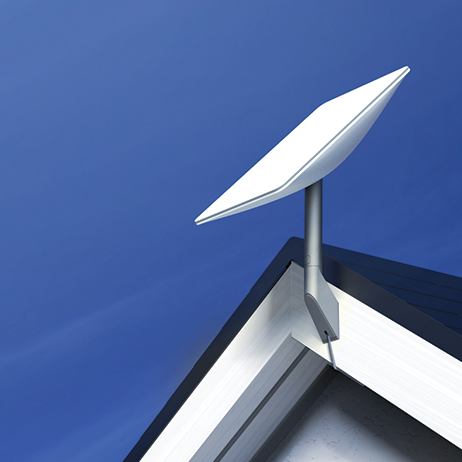
The Starlink Standard comes with a sturdy mobile base, and with the included 75ft cable, it can be moved to an area with a clearer view of the sky if needed. Additionally, a 150ft cable is available for those who want to extend the dish even further.
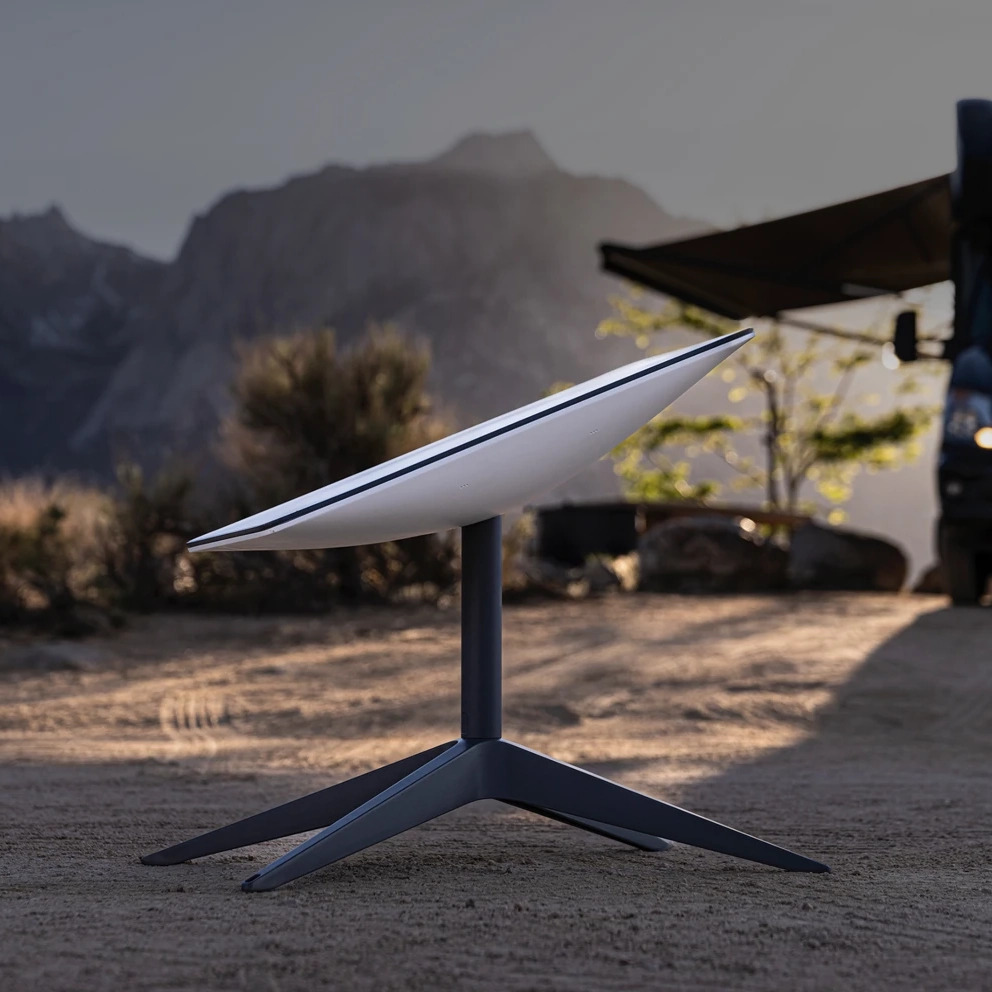
Starlink Standard vs. Starlink High Performance
The Flat High Performance Starlink is a new, permanent installation dish designed for in-motion use and challenging environments. It has enhanced GPS capabilities and a wide field of view, allowing for consistent connectivity while on the go. It can connect to more satellites than the Standard version, improving its performance in extreme weather conditions.

Its benefits include:
- Better visibility of satellites
- Permanent installation on vehicles
- Improved weather resistance
- Better performance in hot weather and snow, and a high wind rating.
However it’s important to note that its permanent installation can limit its use in heavily treed areas, and it uses more power than the Standard version.
The Standard Starlink provides portable, high-speed, low latency internet access at any destination with active Starlink coverage. It has a quick setup and breakdown process, making it easy to move to your next destination. Unlike the High Performance version, it is not designed for in-motion use and has a lower power usage rating, averaging 50-75 watts.
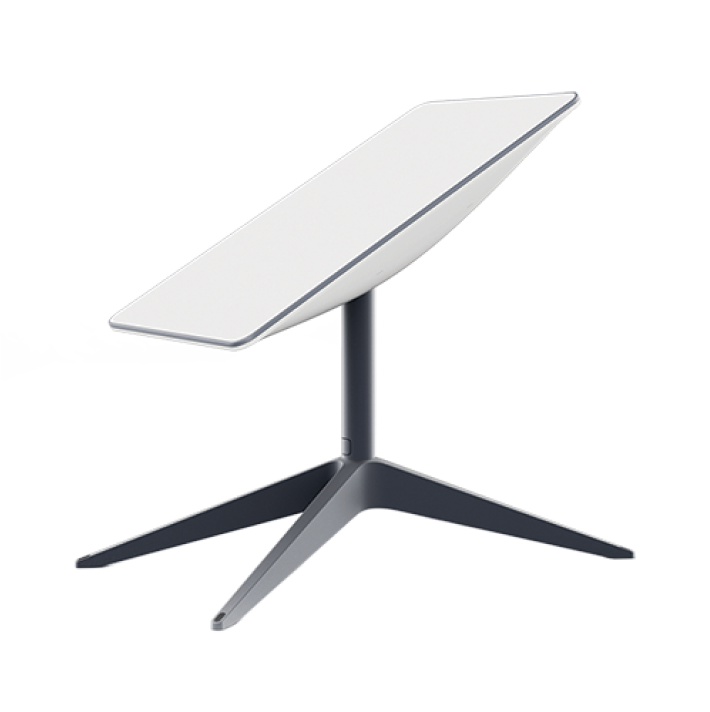
Costs
The hardware for Starlink for RVs has a one-time cost of $599, while the Flat High Performance version comes at a more expensive cost of $2,500. Both options require a monthly service fee of $135. The service can be paused and resumed at any time, and the billing is done in one-month increments, allowing users to customize their service to their travel needs. Users can manage their service easily through the Starlink App.
Standard: $599
High Performance: $2,500
Service Fee: $135/mo
The Starlink service is not contract-based and is billed on a monthly basis. You can cancel the service at any time, but your service will remain active until the end of the payment period. However, reactivating the service is dependent on the availability and capacity of the service in your area, and it may not be immediate.
You can pause or un-pause your Starlink service at any time through your account page. Service is charged in full monthly increments and can’t be pro-rated. If you pause your service before the end of the billing period, you’ll still receive service for the remainder of the period. If you pause after the billing statement has generated, your service will be scheduled to pause the following month.
Final thoughts
The experience of using Starlink for 9 months on the road has shown that it is indeed a game changer for digital nomads, offering fast and reliable internet connectivity in remote areas and challenging environments. Despite some limitations and challenges, such as the need for a clear view of the sky and the occasional signal drops, the benefits and convenience of having fast internet access in remote areas cannot be overlooked. With the continuous expansion of satellites and active coverage areas, the reliability and convenience of using Starlink are only expected to increase. As Starlink continues to expand its coverage and improve its technology, it is likely to become an increasingly attractive option for digital nomads and other remote workers.
While we have had positive experiences with Starlink, we cannot guarantee that all users will have the same experience, and there may be factors outside of our control that affect the performance of the product. Readers are encouraged to conduct their own research and seek advice directly from Starlink before making any decisions related to purchasing or using Starlink or any other product mentioned in this article.
Starlink is a trademark of SpaceX, and its logo is a registered trademark of the company. The use of the “Starlink” name and logos in this article is solely for the purpose of conveying information about the product and does not imply any endorsement or sponsorship by SpaceX. All other trademarks, registered trademarks, product names, and company names mentioned in this article are the property of their respective owners.
-Roam Offgrid
